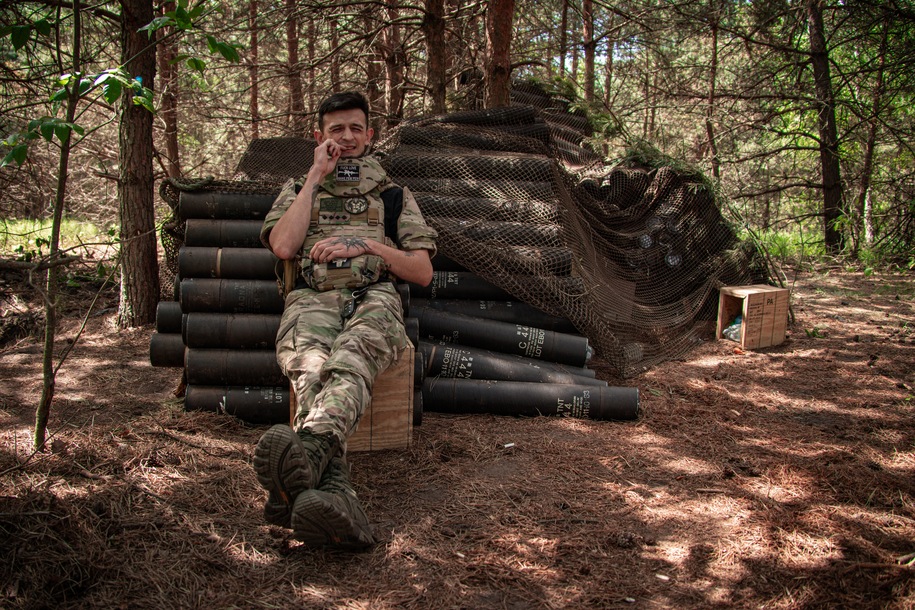
The Russian navy owns just one aircraft carrier. It’s been out of service since 2019 and may never sail again.
But the “carrier” that dictator Vladimir Putin has bragged about for years isn’t the sad, outdated, and accident-prone Admiral Kuznetsov: It’s Crimea. On the anniversary of the 2014 invasion in which Russia captured the Crimean Peninsula, Putin rolled out an old nickname to describe how a captured Crimea allowed Russia to dominate the Black Sea.
“I recalled that Crimea is often called the unsinkable aircraft carrier,” said Putin. “This is what prompted me to say that Crimea had returned to its home harbor.”
But even if the land that Russia’s Crimean air bases rest on is unsinkable, the planes, buildings, and defenses at those bases are not unreachable. And Ukraine has been reaching them—a lot.
Crimea has already become too dangerous for Russian ships. Now it may also be too dangerous for Russian planes. And soon, it could be too dangerous for Russians altogether.
A Ukrainian attack using ATACMS missiles took out multiple S-400 air defense positions near Sevastopol this week. The same weapon was already successfully striking airfields in Crimea, but with air defenses depleted, if not eliminated, Russian bases in Crimea are now vulnerable to attack by less sophisticated missiles and drones.
Russia has reportedly pulled combat aircraft from bases in Crimea and moved it to sites within Russia. But it seems as if they haven’t gone far enough. There were reports on Thursday that aircraft were being pulled from Mozdok airfield, nearly 1,000 kilometers from Ukraine, after the base there was hit by Ukrainian drones. In May, there were reports that Russia had also been forced to pull back aircraft stationed at Kuschevsk military airfield following another drone attack there. That followed an April attack on the Yeysk airbase across the Tahanrozka Gulf from Mariupol.
Ukraine has continually harried aircraft in the south, which not only reduces Russia’s ability to defend its positions in Crimea, but reduces the threat of glide bombs and other air-deployed weapons along the entire southern front.
According to The Telegraph, Russia has lost all its safe spaces from which to operate aircraft in the south of Ukraine.
Crimea itself is now being squeezed—and not just the naval base in Sevastopol. American-supplied ATACMS ballistic missiles and President Biden’s eventual lift on the ban from using them to hit targets in Russia (entirely legitimately under Article 51 of the UN charter) means that no place in the theatre is now safe from the Ukrainians.
As of June, there are only two supply lines into Crimea. The Kerch Bridge is still operating, but at a reduced capacity after two attacks. The second route is a refurbished and extended rail line along the north coast of the Black Sea through occupied Mariupol. Russia tried to supplement these routes with ferries, but Ukraine knocked the ferries out.
So why doesn’t Ukraine just go ahead and take out the Kerch Bridge?
It remains unclear whether Joe Biden has allowed the Ukrainians to have unitary-warhead ATACMS which could take the bridges down: but it is clear that no matter what ATACMS they have they can cut the overland railway whenever they like. It could be repaired quite quickly – it is hard to cripple a railway laid over flat country for a long time – but that supply route is clearly no longer to be relied upon.
It’s no longer a question of if Ukraine can take out Russia’s routes into Crimea: It’s a matter of when they do it and how that action fits into a larger plan.
The loss of Russian planes and ships isn’t the only thing making Putin’s position in Crimea precarious. The action the Russians took out of fear that Ukrainians would follow up the liberation of Kherson by pushing across the Dnipro River has had some serious consequences for Crimea’s long-term sustainability.
The Telegraph even indicates that some analysts are having … that thought. The thought that has come up many times since the illegal invasion began, but which neither side has acted on up to this point.
Some have even started to consider if this might be the moment for an amphibious landing of some sort by Ukraine. The Ukrainians have already made determined efforts to get across the Dnipro river, but the classic use of amphibious assault is to outflank the enemy. A landing in Crimea would avoid the need to attack into prepared defences as on the existing front line.
Ukraine did land a small number of men in Crimea almost a year ago. If that was a test run, it would seem to indicate that, even then, Russia’s coastal defenses weren’t any more reliable than their aerial counterparts.
As kos has pointed out several times, pulling off an amphibious landing is something like an 11 on a 1 to 10 scale of difficulty. But hey, if Russia doesn’t see it coming and doesn’t have defenses in place, maybe it’s just more of a boat trip.
It would certainly be a shock to all those Russians f-cking around north of Kharkiv.
Speaking of which …
Many in Kharkiv seem to be pointing at one change that happened in Washington, D.C., as the turning point for Russia’s attempt to retake northern Ukraine.
This week, Ukrainian President Volodymyr Zelenskyy is at the annual G7 Summit, meeting with world leaders. Hopefully, he’s getting what he needs for Ukraine.
Keep your fingers crossed.